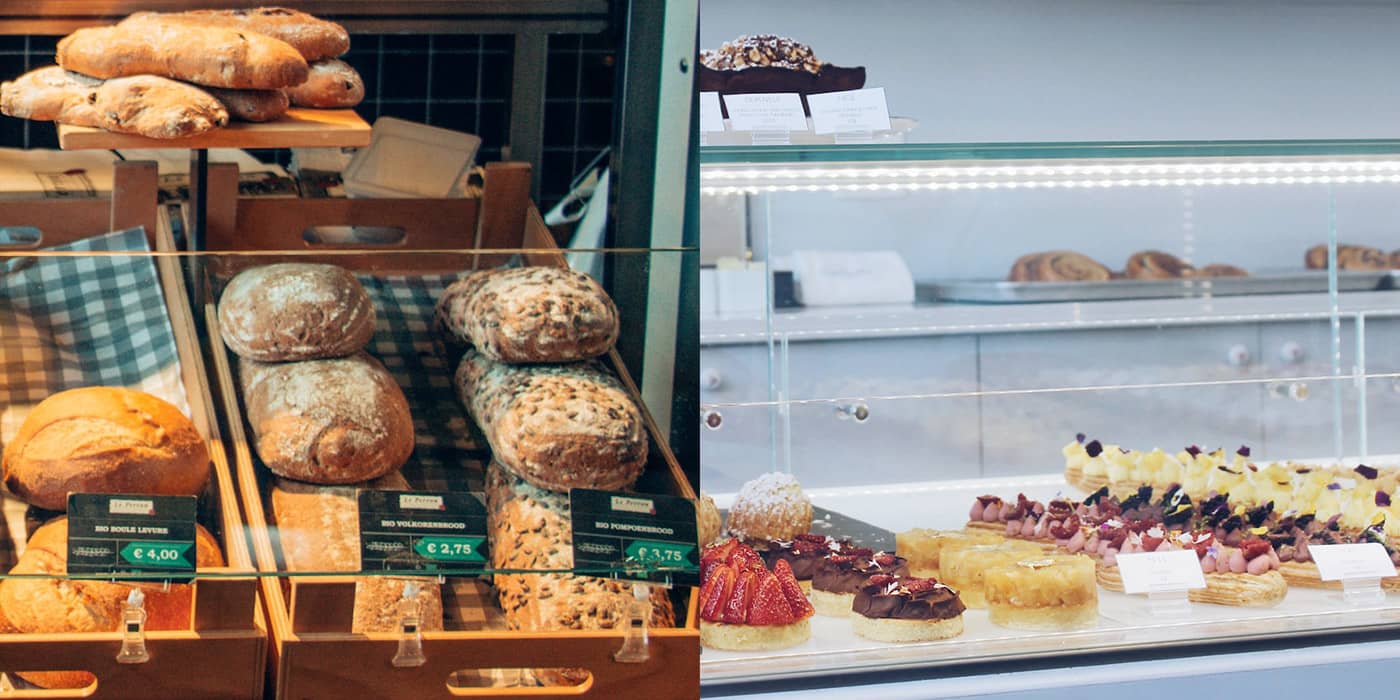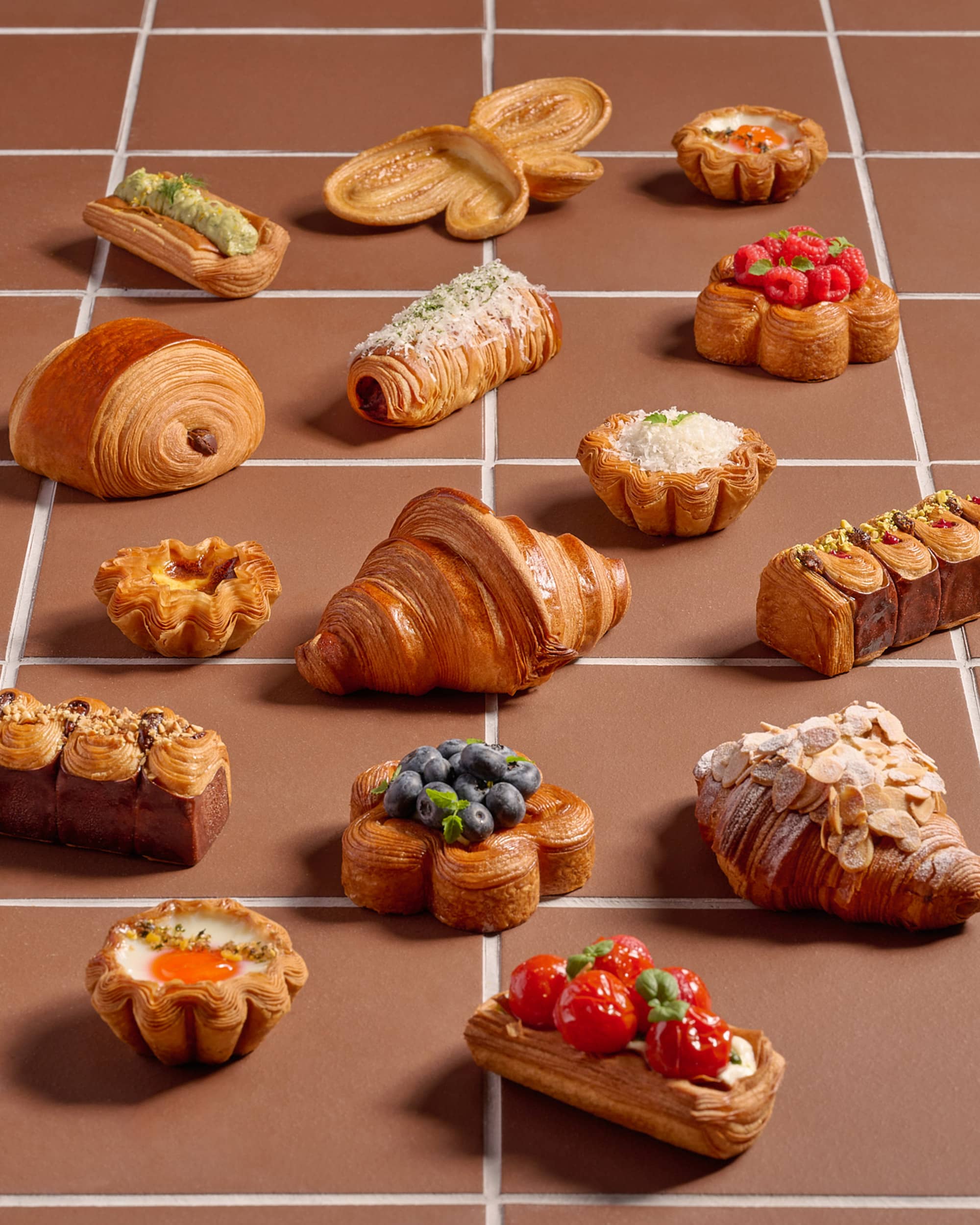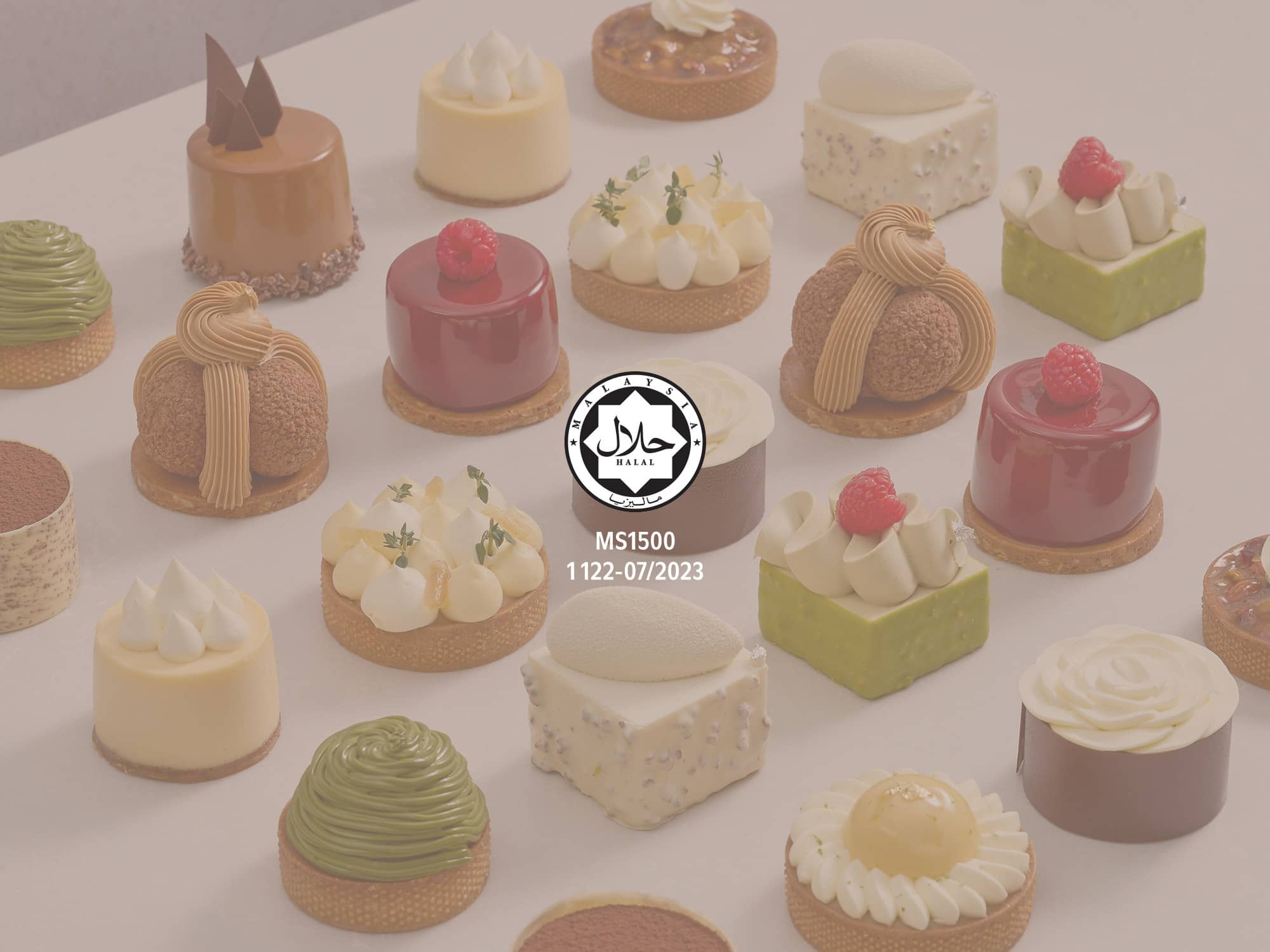Bakery vs Patisserie: The Showdown!
|
Bakery |
Patisserie |
|
|
Focus |
Baked goods—bread, croissants, bagels, pies, and cakes |
Intricate pastries, mousse cakes, macarons, éclairs, tarts, petit gateaux, and desserts |
|
Technique |
Simple and rustic |
Creative and precise |
|
Emphasis |
Functionality and versatility |
Flavour and aesthetics |
|
Maker |
Baker |
Patissier/Pastry Chef |
|
Accessibility |
Often more affordable and accessible |
Often more expensive and exclusive |
|
Baking methods |
Direct heat (e.g. oven) and indirect heat (e.g. steam) |
Shaping, moulding, and decorating by hand |
The difference between a bakery and a patisserie
A bakery typically specialises in a wide range of bread products such as loaves, rolls, bagels, and sandwiches, along with pastries such as croissants, cinnamon rolls, and donuts.
A patisserie specialises in French pastries such as fruit tartlets, Mille-feuille, Choux pastries, entremets, and are more focused on producing delicate and artistic pastries.

Bakeries
- Can be found all over the country, even in the smallest towns!
- Simpler making process—many are made with basic ingredients such as flour, sugar, butter, and eggs, baked using traditional techniques that have been passed down through generations, and baked in the oven. Techniques can include mixing, kneading, proofing, and baking, often done using a combination of handcraft and specialised equipment.
- Designed to be enjoyed at any time of day—breakfast, dessert, as a snack.
- Often offer a wide variety of options to suit different tastes and dietary needs—gluten-free, vegan, and low-sugar options.
- Often more affordable and accessible, making them a popular choice for people who are looking for delicious baked breads and desserts at an affordable price.
- Bakers require a certain level of technical skill and knowledge, such as understanding how to properly mix and proof dough, bake at the right temperature and humidity, and how to create the desired texture and flavour.
- Popular baked breads:
Baguette: Popular for sandwiches and to accompany soups and stews.
Croissant: Buttery and flaky, often enjoyed at breakfast or brunch.

Patisseries
- Desserts are more specialist, intricate, elegant, and are seen as an art form—both in technique and appearance, well-crafted with a range of textures and unique flavour combos, and often beautifully decorated to be one-of-a-kind desserts.
- Emphasis is on attention to detail and the use of high-quality ingredients, often including exotic fruits, exclusive chocolates, and specialty flours.
- Techniques include tempering chocolate, achieving the right texture for layers that follow, and creating delicate sugar and chocolate decorations to elevate the presentation and taste of the desserts.
- Often found in hotels—but are gaining popularity and becoming more accessible within the country. They're often enjoyed for high-tea and special occasions.
- Considered a luxury item and can be more expensive due to quality of ingredients used, the intricate techniques involved, and the time and effort required to create each dessert.
- Patissiers/Pastry Chefs require a high level of artistic creativity and precision, as well as a deep understanding of ingredients, flavour combinations, and presentation.
- Popular desserts:
Eclair: Made with choux pastry filled with cream and topped with chocolate, glaze, cream, and fruits.
Saint-Honoré: French classic with a pastry puff base, cream, sponge, and choux puffs.
Choose your indulgence
Mouth-watering croissants and savoury bagels; or heavenly chocolate mousse cakes and fruity tarts, bakeries and patisseries can both satisfy your cravings when you're in the mood for a treat—it just depends on what your palate is calling for! The next time your sweet tooth takes the driver's seat, let your taste buds guide the way and lead you to the wonderful paradise of either a bakery or patisserie!




